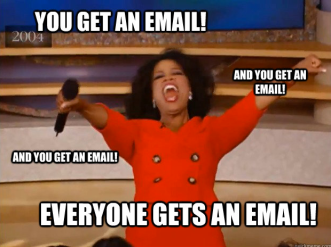Conventional wisdom (or the average of what I’ve heard 😂) normally puts most managers expecting safety advisors to be 80/20, 80% in the field and 20% in the office. I’ve never heard of any studies re this split but seems like an industry norm that developed over time, outside of the traditional sources of information. In other words “It sounds good”.
I think any targets such as this without decent underpinning logic are always tough to have people want to hit (devoid of data around leverage and comparative by-products & benefit), but often organisations don’t help ourselves in relation to enabling our people to spend more time in the field.
Primary reason I’ve heard over the years for lack of field time; staying up with and responding to email communication. How do we fix?
Email is a beast, one that has snowballed in years and is rarely understood by sender’s regarding their emails by-products, especially at scale. A similar concept is people who have no dollar limit of authority can call a meeting of ten people for an hour with no requirement to justify the cost (wages/salary) vs outcomes.
There are a number of ways that email can be curtailed (it can’t be killed, for now anyways), and my two favourites to suggest are:
- Email charter – http://www.emailcharter.org/
- Identifying email is an issue in your organisation and getting enough people past the tipping point to make a difference is tough. Fortunately, the hard work of drafting the problem and solution has been succinctly already done for your here
- Slack (or similar) – https://slack.com/
- Instant messaging forums (closed) have been around for a long time but rarely have been done with the simplicity and elegance of the current crop of products. Effectively they eliminate email but making communication open to people within your organisation. This means, no lost communication or lessons learnt or the need for ccing. It takes some discipline and a whole lot of willingness and supportive management but is another strong contender for minimising the email beast.
So if you want to increase your teams time in field ratio (I’ll tackle the reliance on the fundamental time in field assumption in a later post) enable your people to have more time away from their desks not ask them to ignore social aspects of work (replying to communication!).

